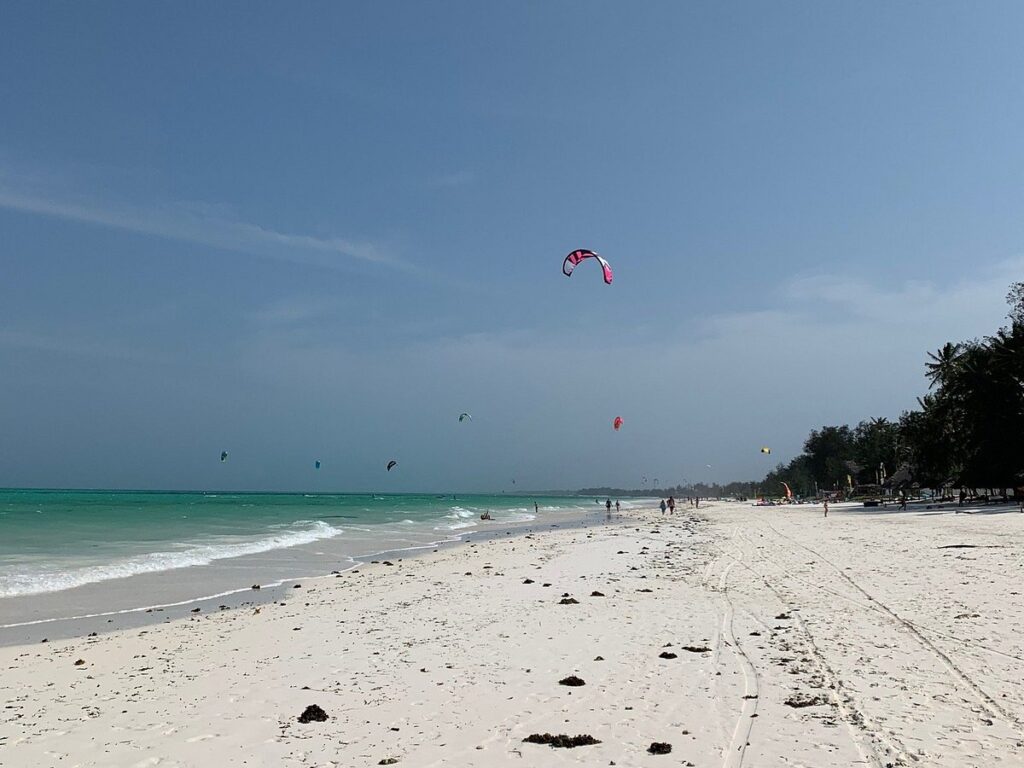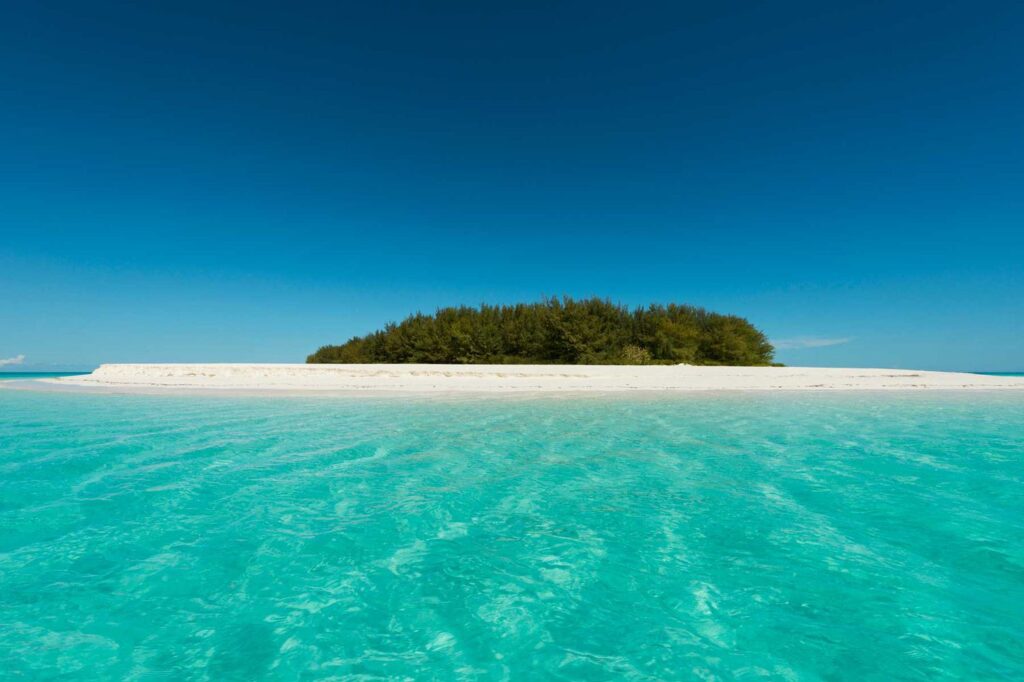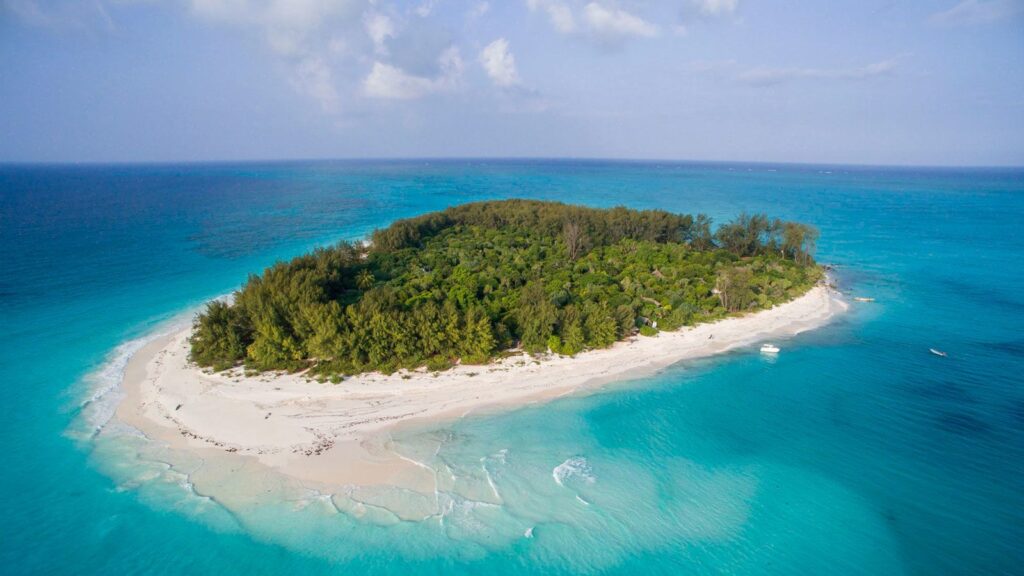Zanzibar’s Rich History and Culture: Exploring the Island’s Fascinating Heritage

Zanzibar’s Rich History and Culture: Exploring the Island’s Fascinating Heritage Zanzibar History and Culture: Zanzibar, often called the “Spice Island,” is a treasure trove of rich history, vibrant culture, and diverse influences. Located off the coast of Tanzania in East Africa, this enchanting archipelago has long been a crossroads for traders, explorers, and settlers from all over the world. Its strategic position along ancient trade routes has shaped the island’s culture, creating a unique blend of Arabic, Portuguese, African, and Indian traditions. Today, Zanzibar offers visitors a fascinating glimpse into its diverse past, from its ancient Stone Town to its spice plantations and cultural festivals. Here’s a journey through Zanzibar History and Culture, showcasing the island’s captivating heritage. From the influence of Arabic traders to the impact of Portuguese rule, Zanzibar History and Culture is deeply rooted in its past. Visitors can explore the historical landmarks, such as Fort Jesus and the Stone Town, which offer a window into the island’s storied past and its role in global trade and cultural exchange. Zanzibar’s rich heritage is also evident in its vibrant cultural festivals, delicious cuisine, and enduring traditions that continue to thrive today. 1. The Legacy of Arabic Influence: The Heart of Swahili Culture Zanzibar’s history has been deeply influenced by the Arab traders and settlers who arrived on the island over a thousand years ago. The island became an important center for the Swahili Coast, a trading hub linking East Africa with the Arabian Peninsula, India, and beyond. The Arabs brought with them their language, Islam, and architectural styles, all of which have had a lasting impact on Zanzibar’s culture. Arabic Architecture in Stone Town:The most striking evidence of Zanzibar’s Arab heritage can be found in Stone Town, the island’s historic capital and a UNESCO World Heritage Site. Narrow winding streets, grand carved wooden doors, and beautiful mosques dot the landscape, offering a glimpse into the island’s Swahili-Arab architectural style. The House of Wonders, once a palace of the sultans, is a prime example of Zanzibar’s Arabic influence. Swahili Language and Culture:The majority of Zanzibar’s population speaks Swahili, a Bantu language that has absorbed a significant amount of Arabic vocabulary due to the long-standing Arab presence. Swahili culture is a blend of African traditions with Arab influences, evident in the island’s music, cuisine, and customs. Why Visit: Explore the narrow streets of Stone Town and admire its unique architecture. Experience the local culture and learn about the deep-rooted influence of Islam and Arab traditions on everyday life in Zanzibar. 2. Portuguese Influence: A Short but Significant Chapter While the Arabs had the most enduring influence, Zanzibar’s history also includes a brief but significant chapter under Portuguese rule. The Portuguese arrived in Zanzibar in the late 15th century, and their presence lasted for about two centuries. During this time, they built forts, introduced new goods, and established their dominance in the Indian Ocean. Fort Jesus:One of the most enduring symbols of the Portuguese presence is Fort Jesus, located in Stone Town. Built in the late 16th century to protect Portuguese interests, the fort has since been converted into a museum. Visitors can explore the fort’s walls and learn about its role in Zanzibar’s history, including its resistance to both the Portuguese and later Omani Arab rule. Why Visit: Explore Fort Jesus, which offers a fascinating glimpse into Zanzibar’s history during the Portuguese colonial era. Learn about the Portuguese impact on Zanzibar’s culture and trade routes, particularly in the context of the spice trade. 3. African Roots: The Slave Trade and its Impact Zanzibar’s strategic location made it an important center for the slave trade from the 17th to the 19th centuries. The island served as a key transit point in the trade of enslaved Africans to the Middle East, India, and other parts of the world. The effects of this dark period in history are still felt in Zanzibar today, and the island has taken great strides to preserve and educate visitors about this significant chapter. The Slave Market and Museum:The Zanzibar Slave Market, located in Stone Town, was once a major center for the sale and export of enslaved Africans. Today, it houses the Slave Market Museum, where visitors can learn about the history of the transatlantic slave trade and the lives of those who were trafficked through Zanzibar. The museum is a poignant reminder of the island’s role in this tragic period of history. The Zanzibar Memorial:Near the old slave market, you’ll find the Zanzibar Memorial, a statue commemorating the abolition of the slave trade in 1873. This site honors those who suffered under slavery and highlights Zanzibar’s transformation from a major hub for the trade to a place of reconciliation and education. Why Visit: Visit the Slave Market Museum to learn about the island’s role in the African slave trade. Reflect on Zanzibar’s journey from a major slave trading post to a center of cultural heritage and human rights. 4. Indian and African Fusion: Zanzibar’s Diverse Culinary Heritage Zanzibar’s food culture is a direct result of centuries of trade and cultural exchange. The island’s cuisine is a delightful fusion of African, Arab, Indian, and even European influences, with an emphasis on spices, seafood, and tropical fruits. Spice Island:Zanzibar’s nickname as the “Spice Island” is well-earned. The island has been a major producer of cloves, nutmeg, cinnamon, and other spices since the 19th century. A visit to one of Zanzibar’s spice plantations is a must for anyone wanting to understand the historical significance of spices in the island’s economy and culture. Zanzibar Cuisine:The island’s cuisine reflects its melting pot of cultures. Dishes like Zanzibar pizza, pilau rice, and mishkaki (grilled skewers) showcase the Indian and Swahili influences, while seafood, including octopus, lobster, and fish curry, is abundant thanks to Zanzibar’s coastal location. Why Visit: Take a spice tour to discover the island’s history as a major spice producer. Sample local dishes that reflect Zanzibar’s diverse cultural influences, from biryani to sambusa. 5. Festivals and Music: Celebrating Zanzibar’s
Zanzibar’s Best Beaches: A Guide to the Island’s Most Stunning Shores

Zanzibar’s Best Beaches: A Guide to the Island’s Most Stunning Shores Zanzibar Best Beaches, a tropical paradise off the coast of Tanzania, is home to some of the most stunning beaches in the world. Known for its turquoise waters, powdery white sands, and lush palm trees, Zanzibar offers a diverse range of beach experiences, from secluded coves to lively resort strips. Whether you’re looking for a peaceful retreat or an adventurous getaway, Zanzibar’s best beaches have something for every traveler. Here’s a guide to the island’s best beaches that you won’t want to miss. If you’re in search of a serene escape, Zanzibar Best Beaches offer a variety of secluded spots where you can relax in total tranquility. From the peaceful Matemwe Beach to the less-explored Bwejuu Beach, these hidden gems provide an intimate experience of Zanzibar’s beauty. For those seeking excitement, Zanzibar Best Beaches also feature lively locations like Nungwi and Paje Beach, where you’ll find vibrant local culture, water sports, and more. With such a wide range of beach experiences, Zanzibar’s best beaches promise an unforgettable getaway. 1. Nungwi Beach: The Best for Vibrant Vibes Located on the northern tip of Zanzibar, Nungwi Beach is one of the most famous beaches on the island. Known for its lively atmosphere, this beach is perfect for those looking to experience a mix of relaxation and adventure. The beach is home to several luxury resorts, beachfront bars, and restaurants, offering visitors everything from fresh seafood to vibrant nightlife. Why Visit: Great for swimming, as the tides are less extreme than other parts of the island. Offers a variety of activities, including boat trips, snorkeling, and scuba diving. A lively atmosphere with plenty of dining and entertainment options. Best for: Those who want to enjoy both relaxation and a lively, social atmosphere. Families and groups looking for beach activities and water sports. 2. Kendwa Beach: For Unspoiled Beauty Adjacent to Nungwi but slightly more tranquil, Kendwa Beach offers visitors a peaceful alternative while still being close to the action. Famous for its crystal-clear waters and soft sand, Kendwa is perfect for swimming and lounging under the sun. The beach is also home to a variety of upscale resorts and beachfront bars, but it retains a relaxed and laid-back atmosphere. Why Visit: The lack of strong tidal changes makes it perfect for swimming at any time of the day. Pristine, unspoiled surroundings and fewer crowds compared to Nungwi. Stunning sunsets that are perfect for photography and evening relaxation. Best for: Couples, honeymooners, and those looking for a peaceful escape with access to luxury. 3. Paje Beach: The Kitesurfing Haven On the southeast coast of Zanzibar lies Paje Beach, a laid-back haven known for its wide, flat beach and strong winds. It’s one of the best spots in East Africa for kitesurfing, attracting enthusiasts from around the world. Paje Beach has a vibrant, youthful energy, with plenty of beach bars, boutique accommodations, and laid-back cafes. It’s the ideal destination for those looking to mix adventure with relaxation. Why Visit: A top destination for kitesurfing, with perfect conditions for both beginners and experienced riders. Secluded enough to avoid the larger crowds of more touristy areas, while still offering amenities. Rich local culture and a variety of traditional Swahili experiences to explore. Best for: Water sports enthusiasts, especially kitesurfers and windsurfers. Budget travelers and those looking for a more relaxed beach atmosphere with a youthful vibe. 4. Matemwe Beach: A Tranquil Retreat If you’re searching for a more tranquil and secluded experience, Matemwe Beach on the northeast coast of Zanzibar is perfect for you. This beach is known for its peaceful ambiance, wide stretch of sand, and shallow waters. It’s a great spot for a quiet retreat, a romantic getaway, or a place to just unwind and soak in the natural beauty. Why Visit: A peaceful, quieter beach with fewer tourists, perfect for relaxation and solitude. Ideal for snorkeling and diving, particularly with the nearby Mnemba Atoll, a renowned diving spot. Picture-perfect views and plenty of opportunities for sunset walks along the beach. Best for: Couples, honeymooners, and those looking for a peaceful, off-the-beaten-path beach experience. 5. Jambiani Beach: For a Taste of Local Culture On the southeast coast, Jambiani Beach offers a perfect blend of local culture and stunning natural beauty. This charming, quieter beach is less developed than others, making it an excellent destination for those seeking a more authentic Zanzibar experience. The beach is lined with small, family-run guesthouses, offering a more intimate, less commercialized feel. Why Visit: Offers a unique blend of beauty and cultural immersion with the nearby fishing villages. Ideal for those who want to experience local Zanzibar life while enjoying beautiful beaches. Great for long walks along the beach, with stunning views of the Indian Ocean. Best for: Those looking to immerse themselves in local culture while enjoying a serene beach environment. Budget-conscious travelers who want to escape the more tourist-heavy beaches. 6. Bwejuu Beach: The Hidden Gem Located on the southeastern coast of Zanzibar, Bwejuu Beach is a hidden gem that’s perfect for those who want to experience Zanzibar’s natural beauty without the crowds. The beach is framed by tall palm trees and offers a relaxing, quiet atmosphere. It’s also close to some of the island’s best dive sites, making it ideal for diving and snorkeling. Why Visit: A more secluded beach offering ultimate relaxation and stunning natural surroundings. Close to coral reefs, making it a great spot for snorkeling and diving. Perfect for a more private, intimate beach experience. Best for: Couples, honeymooners, and anyone looking for a quiet escape from the tourist crowds. 7. Prison Island Beach: A Unique Experience For a combination of beach relaxation and history, Prison Island (also known as Changuu Island) is a must-visit. This small island off the coast of Zanzibar offers stunning beaches and the chance to see giant tortoises, some of which are over 100 years old. The island also has a fascinating history, once being a place
Zanzibar’s Best Kept Secrets: Insider Tips for an Unforgettable Island Getaway

Zanzibar’s Best Kept Secrets: Insider Tips for an Unforgettable Island Getaway Zanzibar Hidden Gems: Discover the Secrets of the Spice Island Zanzibar, the spice island off the coast of Tanzania, is renowned for its stunning beaches, rich history, and vibrant culture. While many tourists flock to its famous spots, there are Zanzibar hidden gems scattered across the island that offer an unforgettable and authentic experience. These lesser-known spots provide a more peaceful and unique perspective of this beautiful island. Whether you’re a first-time visitor or a seasoned traveler, these insider tips from locals and frequent visitors will guide you to the best-kept secrets of Zanzibar, ensuring a truly unique getaway. From hidden beaches to local spice farms, Zanzibar hidden gems await those looking to explore beyond the usual tourist path. Zanzibar’s charm lies in its quieter corners and unspoiled natural beauty, offering an authentic escape for those willing to discover the island’s hidden treasures. 1. Explore the Hidden Beaches of Zanzibar While the beaches of Zanzibar are famous for their white sands and turquoise waters, some of the island’s most serene and untouched beaches are often overlooked by tourists. If you’re looking to escape the crowds and find your own slice of paradise, here are a few insider suggestions: Paje Beach: Located on the east coast of the island, Paje Beach is known for its crystal-clear waters and laid-back atmosphere. It’s less crowded than the popular beaches in the north, making it perfect for those seeking peace and tranquility. The area is also a hub for kite surfing, so you can try your hand at this exhilarating water sport. Jambiani Beach: Just south of Paje, Jambiani is a quiet, picturesque village where you can walk along the shoreline and enjoy fresh seafood from beachside restaurants. It’s a great spot to relax without the hustle and bustle, offering a true taste of local Zanzibar life. Nungwi Beach: While Nungwi is well-known, the beach at the northern tip of Zanzibar Island still holds a secret—the hidden sandbanks. Accessible by boat at low tide, these sandbanks offer an incredible opportunity for snorkeling and sunbathing in complete solitude. 2. Discover the Secret Spice Farms Zanzibar’s spice plantations are famous worldwide, but the most well-known ones can often feel a bit commercial. To get a truly authentic spice experience, venture off the beaten path to smaller, lesser-known farms. Milele Zanzibar Eco Farm: This eco-friendly farm near Kizimbani offers guided tours where you can learn about the growing process of various spices, including cloves, nutmeg, and cinnamon. The family-run farm emphasizes sustainability, giving you a deeper insight into Zanzibar’s spice trade. Kidichi Spice Farms: For a more intimate experience, visit the Kidichi Spice Farm in the lush countryside. The knowledgeable guides take you through aromatic plantations and teach you about the history of spice cultivation in Zanzibar, and you can even sample fresh spices right off the plants. 3. Immerse Yourself in the Culture of Stone Town Stone Town is Zanzibar’s historic heart, known for its labyrinthine streets, charming courtyards, and stunning architecture. While there are famous sites like the House of Wonders and Forodhani Gardens, the real magic lies in exploring the lesser-known corners of the town: Tippu Tip’s House: A hidden gem, Tippu Tip’s House is a historic mansion that was once the residence of an infamous 19th-century slave trader and ivory merchant. Though not as well-known as other historical sites, it offers a fascinating glimpse into the island’s complex past. Dhow Harbor: While many visitors pass by the busy port without a second glance, the Dhow Harbor is a wonderful spot to watch traditional wooden dhows (boats) come and go. It’s also a great place to catch a sunset or take a boat trip to nearby islands like Prison Island or Chumbe Island. Zanzibar’s Hidden Courtyards: Explore the lesser-known courtyards of Stone Town, which are tucked away from the bustling streets. These tranquil spaces are perfect for relaxing, sipping a cup of Zanzibar coffee, and absorbing the unique atmosphere of the island. 4. Visit the Lesser-Known Islands Zanzibar is part of an archipelago, and while most people visit Prison Island or Mnemba Island, there are other lesser-known islands that offer a peaceful escape. Chumbe Island: A private marine conservation area, Chumbe Island is a true hidden gem. Accessible only by boat, it’s known for its pristine coral reefs, crystal-clear waters, and eco-friendly accommodations. The island is also home to a protected forest reserve and some of the best snorkeling spots in Zanzibar. Pemba Island: Often overlooked in favor of Zanzibar’s main island, Pemba is a quieter, less commercialized destination. Known for its lush green landscapes, the island offers incredible diving and snorkeling experiences, along with traditional Swahili culture. Visit the Ngezi Forest for bird watching and a walk through the island’s untouched wilderness. 5. Savor Zanzibar’s Culinary Secrets Zanzibar’s cuisine is a melting pot of African, Arab, Indian, and European influences. While many visitors are familiar with Zanzibar pizza or the local seafood, the island has some hidden culinary gems that are worth seeking out: The Rock Restaurant: Located on a small rock in the Indian Ocean near Michamvi, The Rock Restaurant is a must-visit for seafood lovers. Accessible by boat during high tide or on foot at low tide, the restaurant offers stunning views and serves fresh seafood caught daily. Local Swahili Food Stalls: For a truly authentic culinary experience, visit one of Zanzibar’s local food stalls. Forodhani Gardens is popular for its evening food market, but locals know the best food stalls are tucked away in the backstreets of Stone Town. Try ugali (a maize dish), samosa, and kebab, and wash it down with fresh sugarcane juice. Hidden Cafes in Stone Town: Beyond the traditional restaurants, Stone Town also boasts charming hidden cafes where you can enjoy a fresh cup of coffee or a Zanzibari-style breakfast. Coffee House Zanzibar, located on a quiet corner, is a popular spot among locals for its strong coffee and freshly made pastries. 6. Engage
The Ultimate Zanzibar Beach Holiday: A Guide to the Island’s Best Activities and Attractions

The Ultimate Zanzibar Beach Holiday: A Guide to the Island’s Best Activities and Attractions Zanzibar offers an incredible mix of activities for every type of traveler, making it the perfect destination for a Zanzibar Beach Holiday. Whether you’re diving into its clear waters, exploring the rich history of Stone Town, indulging in its spices and cuisine, or simply lounging on the beach, a Zanzibar Beach Holiday promises a once-in-a-lifetime experience. For those seeking adventure, a Zanzibar Beach Holiday provides opportunities for snorkeling and scuba diving in its crystal-clear waters. The pristine beaches are ideal for those who prefer relaxation, while the cultural experiences, like spice tours and historical excursions, make a Zanzibar Beach Holiday a unique and enriching experience. Let Kalulu Safaris guide you on your Zanzibar Beach Holiday and help you craft the perfect escape. With our expertise, you can enjoy unforgettable activities, cultural tours, and a wealth of natural beauty throughout your Zanzibar Beach Holiday. Whether you’re looking to explore vibrant markets, visit secluded beaches, or enjoy a sunset dhow cruise, your Zanzibar Beach Holiday will be filled with cherished memories. From its diverse cuisine to the allure of its local culture, Zanzibar’s charm is waiting for you. A Zanzibar Beach Holiday combines relaxation with excitement, offering the ideal setting for any traveler looking for an unforgettable experience. Don’t miss out on the opportunity to make your Zanzibar Beach Holiday a dream come true! 1. Snorkeling and Scuba Diving: Explore Zanzibar’s Underwater World Zanzibar is a haven for those looking to explore the world beneath the waves. The archipelago is surrounded by vibrant coral reefs teeming with marine life, including colorful fish, rays, turtles, and even dolphins. The Mnemba Atoll, located off the northeastern coast, is one of the top spots for snorkeling and scuba diving. Known for its crystal-clear waters and diverse underwater ecosystem, it’s a must-visit destination for any water sports enthusiast. Why Visit: Stunning coral reefs and abundant marine life make for an unforgettable diving and snorkeling experience. Mnemba Atoll and other nearby dive sites offer some of the best underwater views in East Africa. Diving with dolphins, sea turtles, and an array of exotic fish species adds a magical element to your adventure. Best For: Scuba diving enthusiasts, families, and those eager to explore Zanzibar’s underwater treasures. 2. Spice Tours: Discover Zanzibar’s Rich Flavors Known as the “Spice Island,” Zanzibar has a long history of spice production, and a spice tour is one of the best ways to experience the island’s unique agricultural heritage. On a guided spice tour, you’ll visit working spice farms where you can learn about and sample a variety of spices, including cloves, cinnamon, nutmeg, and vanilla. Many tours also include opportunities to taste fresh fruits and discover how spices are harvested and processed. Why Visit: Discover Zanzibar’s fascinating spice-growing industry and its connection to the island’s history. Enjoy a sensory experience, with fragrant spices and fresh tropical fruits. Learn about the medicinal and culinary uses of Zanzibar’s famous spices. Best For: Food lovers, history buffs, and anyone interested in Zanzibar’s cultural heritage. 3. Cultural Tours: Immerse Yourself in Zanzibar’s History Zanzibar’s culture is a rich blend of African, Arabic, Indian, and European influences, which can be experienced through its architecture, museums, and local traditions. A visit to Stone Town, the island’s historic center, is a must for anyone interested in the island’s history. The maze of narrow streets, ancient buildings, and bustling markets will take you back in time to the days of Zanzibar’s spice trade and Swahili culture. Why Visit: Stone Town is a UNESCO World Heritage site and offers a glimpse into Zanzibar’s past, with its intricate architecture and historical landmarks such as the House of Wonders, The Sultan’s Palace, and The Old Fort. Learn about the island’s role in the spice trade and its significance as a major slave trading center. Explore the local markets, where you can shop for traditional Swahili crafts, clothing, and jewelry. Best For: History and culture enthusiasts, art lovers, and those looking to immerse themselves in Zanzibar’s past. 4. Sunset Dhow Cruise: A Romantic Experience on the Water A dhow cruise is a quintessential Zanzibar experience. Traditional wooden sailing boats, known as dhows, offer an incredible way to explore the island’s coastline and enjoy the breathtaking sunset views. You can embark on a romantic evening cruise, sipping cocktails as you sail across the Indian Ocean, or choose a day cruise that combines relaxation with water-based activities such as snorkeling or fishing. Why Visit: Enjoy a serene and romantic atmosphere as you sail along the coastline. Watch one of Zanzibar’s stunning sunsets from the deck of a traditional dhow. Choose from private or group cruises for a personalized experience. Best For: Couples, honeymooners, and those seeking a relaxed, scenic activity. 5. Visit Prison Island: History and Wildlife Combined A short boat ride from Zanzibar’s main island will take you to Prison Island, also known as Changuu Island. This tiny island, once used as a prison, is now home to a large colony of giant tortoises, some over 100 years old. Visitors can interact with the tortoises, learn about the island’s history, and enjoy its lovely beaches, perfect for swimming and relaxing. Why Visit: See and interact with the world-famous giant tortoises. Learn about the island’s fascinating history, from its time as a prison to its role in the slave trade. Explore the island’s beautiful beaches and enjoy a swim in its crystal-clear waters. Best For: Families, wildlife lovers, and anyone interested in a historical and nature-filled adventure. 6. Jozani Forest: Zanzibar’s Tropical Heart For nature lovers, a trip to Jozani Forest is a must. Located in the heart of Zanzibar’s main island, Jozani Forest is home to the endangered Zanzibar Red Colobus Monkey, found nowhere else in the world. The forest also boasts diverse flora and fauna, making it a great destination for eco-tourism and wildlife photography. Visitors can explore the forest on guided tours, walk along nature trails, and spot
The Best Time to Visit Zanzibar: A Guide to the Island’s Climate and Weather Patterns

The Best Time to Visit Zanzibar: A Guide to the Island’s Climate and Weather Patterns Zanzibar, the enchanting island off the coast of Tanzania, is a paradise known for its pristine beaches, rich culture, and diverse marine life. Whether you’re planning a romantic getaway, a family holiday, or an adventure-filled escape, the timing of your visit can significantly impact your experience. From the best weather conditions to avoiding crowds, here’s everything you need to know about the best time to visit Zanzibar. Zanzibar’s Tropical Climate: What to Expect Year-Round Zanzibar experiences a tropical climate, with warm temperatures and two main seasons: the dry season and the rainy season. The island’s weather is influenced by its proximity to the equator, which means it enjoys sunshine year-round, making it a fantastic destination any time of the year. However, understanding Zanzibar’s climate patterns can help you decide the Best Time to Visit Zanzibar based on your preferences for weather, activities, and avoiding the crowds. Knowing the Best Time to Visit Zanzibar can significantly impact your experience on the island. If you prefer perfect beach weather, clear skies, and outdoor activities, the dry season is the Best Time to Visit Zanzibar. During this period, Zanzibar’s weather is ideal for swimming, snorkeling, and enjoying all that the island’s beaches have to offer. The Best Time to Visit Zanzibar also depends on what type of traveler you are. For those seeking a quieter, less crowded experience, the short rainy season or the shoulder months might be the Best Time to Visit Zanzibar. These periods offer a peaceful escape, lower prices, and opportunities for travelers to experience Zanzibar without the usual hustle and bustle. When planning your trip, it’s crucial to consider what activities you’ll be doing, as the Best Time to Visit Zanzibar for diving may differ from the Best Time to Visit Zanzibar for exploring cultural attractions. Zanzibar’s warm tropical climate makes it an inviting destination throughout the year, but knowing the Best Time to Visit Zanzibar for specific activities ensures a more memorable experience. To truly make the most of your Zanzibar holiday, understanding the Best Time to Visit Zanzibar will help you plan the perfect trip. Whether you want to witness the island’s lively cultural festivals, enjoy its pristine beaches, or explore the underwater world, knowing the Best Time to Visit Zanzibar guarantees a fulfilling vacation. In summary, the Best Time to Visit Zanzibar ultimately depends on your ideal weather, the activities you want to enjoy, and how much you want to avoid crowds. If you’re looking to avoid high-season prices, visiting during the rainy season or shoulder months may be the Best Time to Visit Zanzibar for budget travelers. 1. Dry Season: June to October – Ideal for Beach Lovers and Adventure Seekers The dry season in Zanzibar runs from June to October, and it’s considered the best time to visit the island. Here’s why: Perfect Weather: During these months, Zanzibar enjoys sunny, clear skies with minimal rainfall. Temperatures hover around 26°C to 31°C (79°F to 88°F), making it an ideal time to hit the beaches, swim, or enjoy water activities like snorkeling and diving. Great for Safari & Hiking: If you’re combining your beach holiday with a safari or Kilimanjaro trek, the dry season offers clear skies and pleasant weather, which is perfect for wildlife viewing and outdoor adventures. Low Humidity: Compared to the rainy season, the humidity is lower, which makes the climate much more comfortable for exploring the island’s attractions, including Stone Town, spice farms, and the Jozani Forest. Crowd-Free Experience: While this is the peak tourist season, Zanzibar’s beaches and main attractions are large enough that you can still find peaceful spots to enjoy, especially if you venture beyond the busiest areas like Nungwi and Stone Town. However, booking your accommodation in advance is recommended. 2. Short Rainy Season: November to December – A Quiet Time with Lower Prices The short rainy season, which lasts from November to December, can be a good option for travelers seeking a quieter, more affordable experience. Lower Prices: Since the rain showers tend to be short and intermittent, this period is a great time to score better deals on accommodation, tours, and activities. If you’re looking to save money while avoiding the large crowds, this is a sweet spot to visit. Occasional Showers: Expect brief but heavy rains, typically in the afternoon or evening. The weather is still warm with temperatures ranging from 25°C to 30°C (77°F to 86°F), and the island remains lush and green, making it a beautiful time for nature lovers and photographers. Less Crowded: With fewer tourists, you’ll have more opportunities for peaceful exploration of Zanzibar’s pristine beaches, cultural attractions, and historical landmarks. It’s an ideal time for those seeking a tranquil and intimate Zanzibar experience. 3. Long Rainy Season: March to May – Best for Budget Travelers The long rainy season lasts from March to May, and this is considered the least popular time to visit Zanzibar. However, it can still be a worthwhile choice for certain types of travelers. Heavy Rains: The weather can be unpredictable, with prolonged rain showers, especially from April to May. However, the rains are often intermittent, meaning you’ll have dry spells in between the downpours. Lower Prices & Fewer Tourists: One of the biggest advantages of visiting Zanzibar during this period is the low cost of accommodation and fewer tourists. You can explore the island without the crowds and enjoy significant discounts on tours and hotels. Humidity: Due to the rains, humidity levels tend to be higher, making it less comfortable for extended outdoor activities. If you’re looking for a beach holiday or active outdoor excursions, this may not be the best time. Perfect for Rainy Season Deals: For travelers who don’t mind occasional showers and prefer to take advantage of low-season pricing, visiting Zanzibar during the rainy months can offer a quieter and more budget-friendly experience. 4. The Shoulder Seasons: January and February – Warm & Inviting Between the

